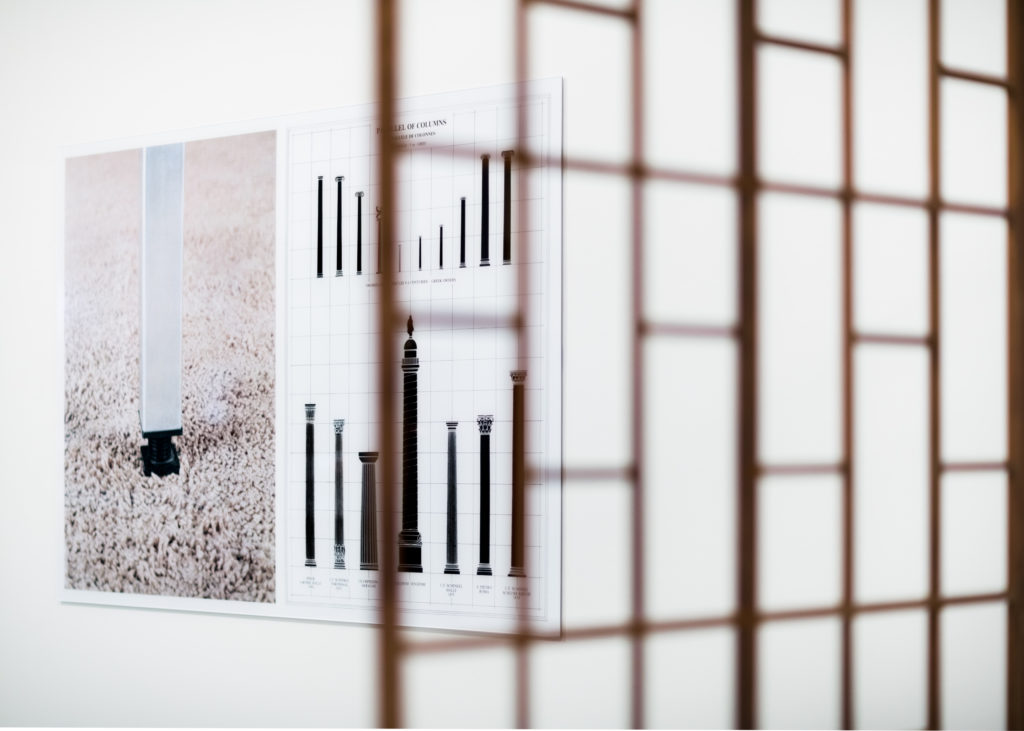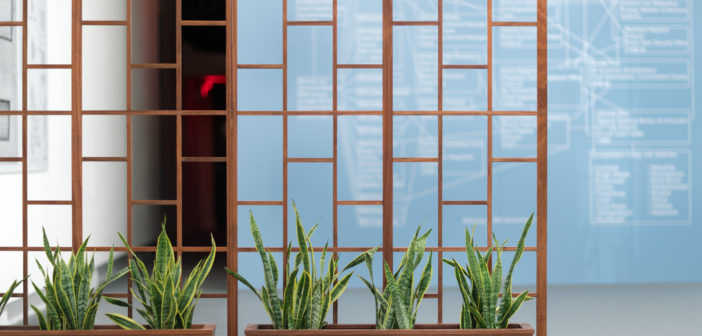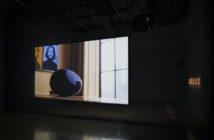Geometry of Oppression, an exhibition of new work by multidisciplinary artist Sandra Erbacher, is on view at SPACE Gallery in Portland. Through corporate critique and critical reflection on bureaucracy, her approach to artmaking compliments the conceptual nature of the work to articulate ideas. Humans form an understanding of the world through engagement with objects and spaces; knowing is malleable and shifts when new variables are presented. New ways of seeing are possible dependent on the body’s interaction or non-interaction.
The content of the Erbacher’s works deals with a discussion of hierarchical structures that abuse power to elevate their position to one of total authority. The works are largely referent to the ideas discussed in the publication IBM and the Holocaust: The Strategic Alliance Between Nazi Germany and America (Crown Books, 2001), by journalist Edwin Black. Erbacher focuses on technology developed to facilitate the killing of millions of Jewish people, minorities, and others through the implementation of a punch card system and other technologies.
Through works that examine bureaucratic structures, Erbacher poignantly depicts compelling evidence of the relationship between an organization and a regime responsible for atrocities. Erbacher examines the devastation that is possible through flawed interests and collaborative efforts of both parties which has left a catastrophic mark on the world. In a vinyl wall work “IBM and the Holocaust”, an information map literally draws the connections between IBM and Nazi Germany, to depict the deep relationship shared in a very clear way. Extraction and reconfiguration of information functions as lenses to examine the exhibition works through. Further, it proposes the questioning of everything, so further unexpected interconnections between systems can be revealed.

Installation view of Sandra Erbacher’s Geometry of Oppression, Space Gallery. Portland (2018) Photo by: Joel Tsui. Courtesy of: Space Gallery.
In reconfiguring the function of objects from their usual context of display to a new space, as seen in her large-scale gridded installation “Trennwandsystem”, Erbacher positions the viewers to re-examine, re-perceive and to understand the items in a new way. She explains this concept is visualized in the works on view through “...the objects and materials incorporated, such as office plants, furniture or carpeting, [which]are typically found within the setting of the office space. In their institutional habitat, their sole purpose is to organize human activity, to maximize efficiency, maintain order and thus aid in the imposition of a hierarchical system of control.” The grid serves as a visual referent for regulation and control as grids are meant to communicate information and to present data through formatting that articulate a desired result.
“Trennwandsystem” is an impactful, large mahogany wooden grid structure that incorporates spaced irregularity in the placement of the grid bars so that it diverges from a uniform gridded structure. Wooden planters containing six plants are positioned in front of the grid. These organic forms juxtaposed in front of the structure interrupt the rigid wooden linework—a metaphor for the body’s relationship to systems. Whether “Trennwandsystem” is evocative of the depth of a grave, or descriptive of the cyclical nature of what continues to persist after what came before, this work serves as a haunting reminder of the impermanence of life and the fleeting nature of time itself.
Geometry of Oppression is on view through May 12, 2018. Space Gallery is open Wednesday through Friday 10:00am - 6:00pm and Saturday from 12:00pm - 4:00pm. For further information of scheduled events, including: educational programming, talks, among others, please refer to: http://www.space538.org/events/sandra-erbacher
Also of note: Sandra has a satellite project, TIIC in conjunction with the exhibition at Border Patrol just up the street from SPACE and on view through May 12th.




